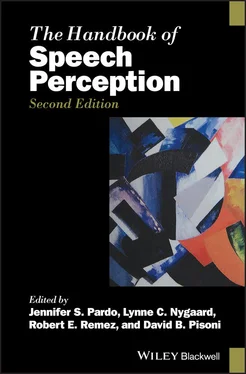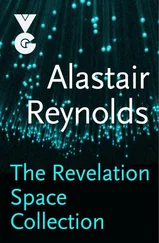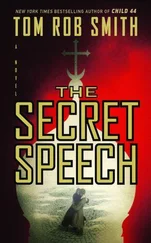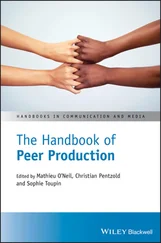The evolving portrait of speech perception that includes organization and analysis recasts the raw cue as the property of perception that gives speech its phenomenality, though not its phonetic effect. The transformation of natural speech to chimera, to noise‐band vocoded signal, and to sinewave replica is phonetically conservative, preserving the fine details of subphonemic variation while varying to the extremes of timbre or auditory quality. It is apparent that the competent listener derives phonetic impressions from the properties that these different kinds of signal share, and derives qualitative impressions from their unique attributes. The shared attribute, for want of a more precise description, is a complex modulation of spectrum envelopes, although the basis for the similar effect of the infinitely sharp peaks of sinewave speech and the far coarser spectra of chimerical and noise‐band vocoded speech has still to be explained. None of these manifests the cues present in natural speech despite the success of listeners in understanding the message. The conclusion supported by these findings is clear: phonetic perception does not require the sensory registration of natural speech cues. Instead, the organizational component of speech perception operates on a spectro‐temporal grain that is requisite both for finding and following a speech signal and for analyzing its linguistic properties. The speech cues that seemed formerly to bear the burden of stimulating phonetic analyzers into action appear in hindsight to provide little more than auditory quality subordinate to the phonetic stream.
An additional source of evidence is encountered in the phenomenal experience of perceivers who listen to speech via electrocochlear prostheses (Goh et al., 2001; Liebenthal et al., 2003). Intelligibility of speech perceived via cochlear implant is often excellent, rivaling that of normal hearing, and recent studies with infant and juvenile subjects (Svirsky et al., 2000) suggest that this form of sensory substitution is effective even at the earliest stages of language development (see Hunter & Pisoni, Chapter 20). The mechanism of acoustic transduction at the auditory periphery is anomalous, it goes without saying, and the phenomenal experience of listeners receiving this appliance to initiate neural activity differs hugely from the ordinary auditory experience of natural speech. Despite the absence of veridical perceptual experience of the raw qualities of natural speech, electrocochlear prostheses are effective in the self‐regulation of speech production by its users, and are effective perceptually despite the abject deficit in faithfully presenting natural acoustic elements of speech. What brings about the perception of speech, then? Without the acoustic moments, there is no stream of speech, but the stream itself plays a causal role beyond that which has been attributed to momentary cues since the beginning of technical study of speech.
A constraint on normative descriptions of speech perception
The application of powerful statistical techniques to problems in cognitive psychology has engendered a variety of normative, incidence‐based accounts of perception. Since the 1980s, a technology of parallel computation based loosely on an idealization of the neuron has driven the creation of a proliferation of devices that perform intelligent acts. The exact modeling of neurophysiology is rare in this enterprise, though probabilistic models attired as neural nets enjoy a hopeful if unearned appearance of naturalness that older, algorithmic explanations of cognitive processes unquestionably lack. As a theory of human cognitive function, it is more truthful to say that deep learning implementations characterize the human actor as an office full of clerks at an insurance company, endlessly tallying the incidence of different states in one domain (perhaps age and zip code, or the bitmap of the momentary auditory effect of a noise burst in the spectrum) and associating them (perhaps in a nonlinear projection) with those in another domain (perhaps the risk of major surgery, or the place of articulation of a consonant).
In the perception of speech and language, the ability of perceivers to differentiate levels of linguistic structure has been attributed to a sensitivity to inhomogeneities in distributions of specific instances of sounds, words, and phrases. Although a dispute has taken shape about the exact dimensions of the domain within which sensitivity to distributions can be useful (e.g. Peña et al., 2002; contra Seidenberg, MacDonald, & Saffran, 2002), there is confident agreement that a distributional analysis of a stream of speech is performed in order to derive a linguistic phonetic segmental sequence. Indeed, this is claimed as one key component of language acquisition in early childhood (Saffran, Aslin, & Newport, 1996). The presumption of this assertion obliges a listener to establish and maintain in memory a distribution of auditory tokens projectable into phonetic types (Holt & Lotto, 2006). This is surely false. The rapid decay of an auditory trace of speech leaves it uniquely unfit for functions requiring memory lasting longer than 100 ms, and for this reason it is simply implausible that stable perceptual categories rest on durable representations of auditory exemplars of speech samples. Moreover, the notion of perceptual organization presented in this chapter argues that a speech stream is not usefully represented as a series of individual cues, whether for perceptual organization or for analysis. In fact, in order to determine that a particular acoustic moment is a cue, a perceptual function already sensitive to coordinate variation must apply. Whether or not a person other than a researcher compiling entries in the Dictionary of American Regional English can become sensitive to distributions of linguistic properties as such, it is exceedingly unlikely that the perceptual resolution of linguistic properties in utterances is much influenced by representations of the statistical properties of speech sounds. Indeed, the neural clerks would be free to tally what they will, but perception must act first to provide the instances.
Multisensory perceptual organization
Fifty years ago, Sumby and Pollack (1954) conducted a pioneering study of the perception of speech presented in noise in which listeners could also see the talkers whose words they aimed to recognize. The point of the study was to calibrate the level at which the speech signal would become so faint in the noise that to sustain adequate performance attention would switch from an inaudible acoustic signal to the visible face of the talker. In fact, the visual channel contributed to intelligibility at all levels of performance, indicating that the perception of speech is ineluctably multisensory. But how does the perceiver determine the audible and visible composition of a speech stream? This problem (reviewed by Rosenblum & Dorsi, Chapter 2) is a general form of the listener’s specific problem of perceptual organization, understood as a function that follows the speechlike coordinate variation of a sensory sample of an utterance. To assign auditory effects to the proper source, the perceptual organization of speech must capture the complex sound pattern of a phonologically governed vocal source, sensing the spectro‐temporal variation that transcends the simple similarities on which the gestalt‐derived principles rest. It is obvious that gestalt principles couched in auditory dimensions would fail to merge auditory attributes with visual attributes. Because auditory and visual dimensions are simply incommensurate, it is not obvious that any notion of similarity would hold the key to audiovisual combination. The properties that the two senses share – localization in azimuth and range, and temporal pattern – are violated freely without harming audiovisual combination, and therefore cannot be requisite for multisensory perceptual organization.
Читать дальше








![О Генри - Справочник Гименея [The Handbook of Hymen]](/books/407356/o-genri-spravochnik-gimeneya-the-handbook-of-hymen-thumb.webp)



